When I first saw the rock art at Ubirr Rock (the oldest rock art in the world) in Kakadu National Park, I never expected to experience the same awe I felt years ago when I first glimpsed Uluru from a plane to Alice Springs. Yet, there I stood, utterly captivated.
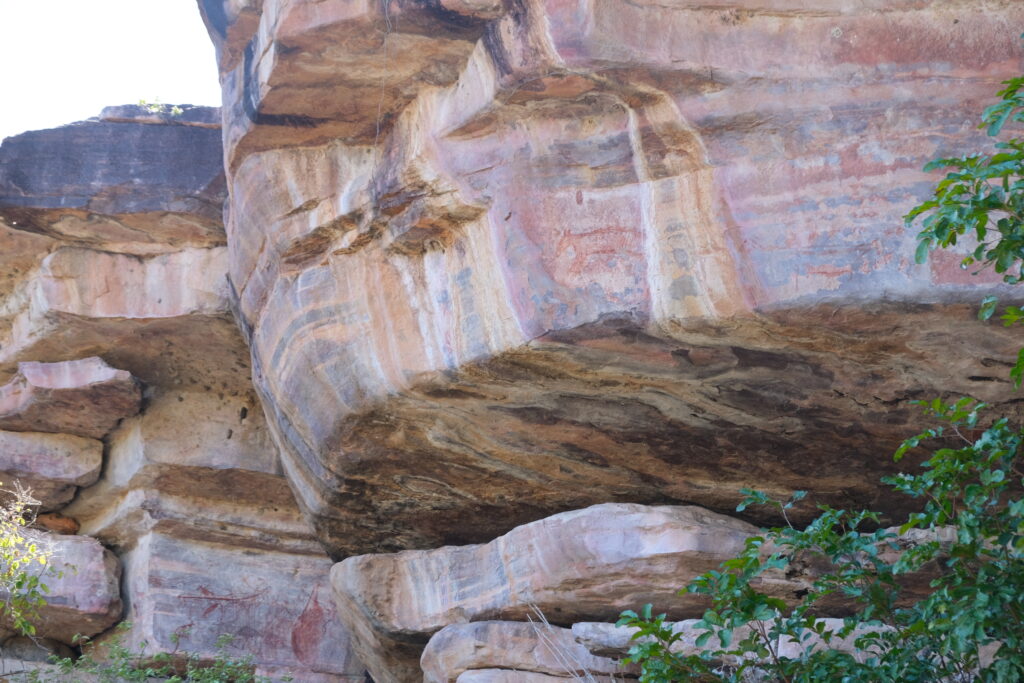
Aboriginal people have lived around Ubirr for over 65,000 years, and the rock art records essential events in the lives of the residents of Ubirr. This rock art depicts traditional paintings and the scenes Aboriginal people illustrate. It’s a part of the unwritten library of knowledge and spiritual beliefs of the Bininj Aboriginal people. The senior clan members own certain parts of this library and pass it on to younger people via storytelling, songs, dance, music ceremonies, and food-gathering expeditions. These lessons have continued for thousands of generations. Some paintings are significant as they are believed to be painted by the first people of the creation era, called the Dreamtime, who formed the land and all it contains.
The profound essence of Aboriginal culture, the mesmerizing rock art, the warm hospitality of the Bininj people (the traditional owners of the northern part of Kakadu) who graciously welcomed us into their backyard, and the chance to explore Ubirr Rock—it all left me in awe.
We departed from Darwin a little after 5 AM, making a brief stop at Corroboree Tavern before arriving at Ubirr Rock around 9 AM. Our tour guide, Norm (short for Norman), was kind, respectful, and knowledgeable, with a Sri Lankan background. He led us through the Ubirr Rock Art site, pointing out many fascinating details. However, I found myself only half-absorbing his explanations, as I was utterly captivated by the stunning rock art.
Mimih Spirit on Ubirr Rock
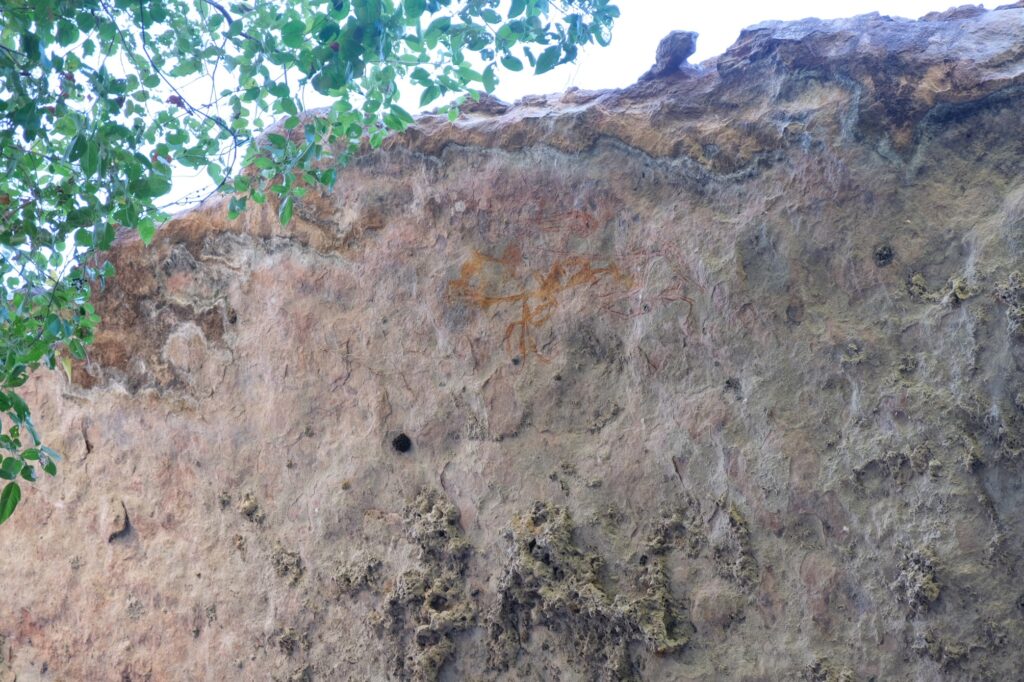
One of the parts that fascinated me the most was the Aboriginal people’s belief in the Mimih Spirit. Mimih spirits are believed to be very tall and able to place paintings of themselves in unlikely places, such as on top of caves or on the bottoms of rocks, which they lift and then put back. Mimih spirits are considered invisible to most people, but the Aboriginal people often paint them in traditional designs.
Norm, the tour guide, likened these Mimih spirits to angels (laughing dynamic angles as he referred them) and told us the story of Mabuyu, a Mimih spirit who was initially benevolent but turned malevolent. The story goes: after a fishing expedition, Mabuyu dragged his catch on a string when a greedy person cut the string and stole his fish that night. Mabuyu waited until the thieves had eaten his fish and camped in their cave near the East Alligator River. Then, he blocked the cave with a huge rock. The rock art of Mabuyu reminds Aboriginal people to tell a story that warns against stealing.
This story and belief remind me of how, in Hinduism, some of our Gods and Goddesses have both kind and wrathful sides. It is our actions and choices (free will) that determine which side we will experience.
A Drawing of Aboriginal Traditional Laws
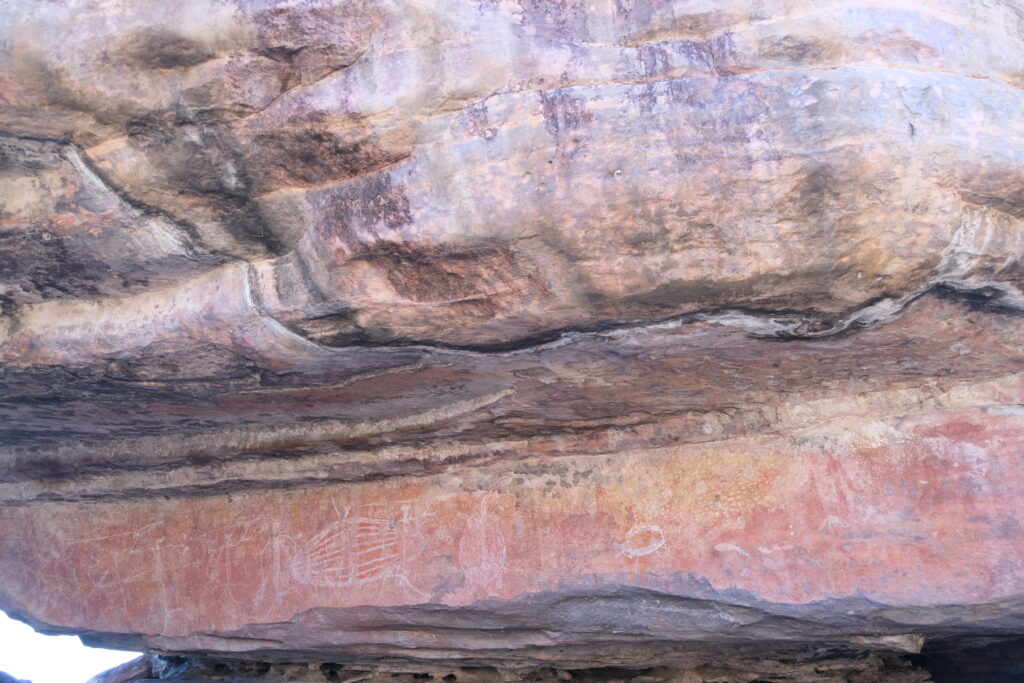
The daily life of Aboriginal people is guided by traditional laws. As children, Aboriginal people are taught to respect these laws and the system of punishment which enforces them. The art above reminds people of a story about a young girl who broke traditional food taboos by eating Barramundi at the wrong time. She was punished too severely, and a battle between clans followed, killing many people.
Paintings over Paintings
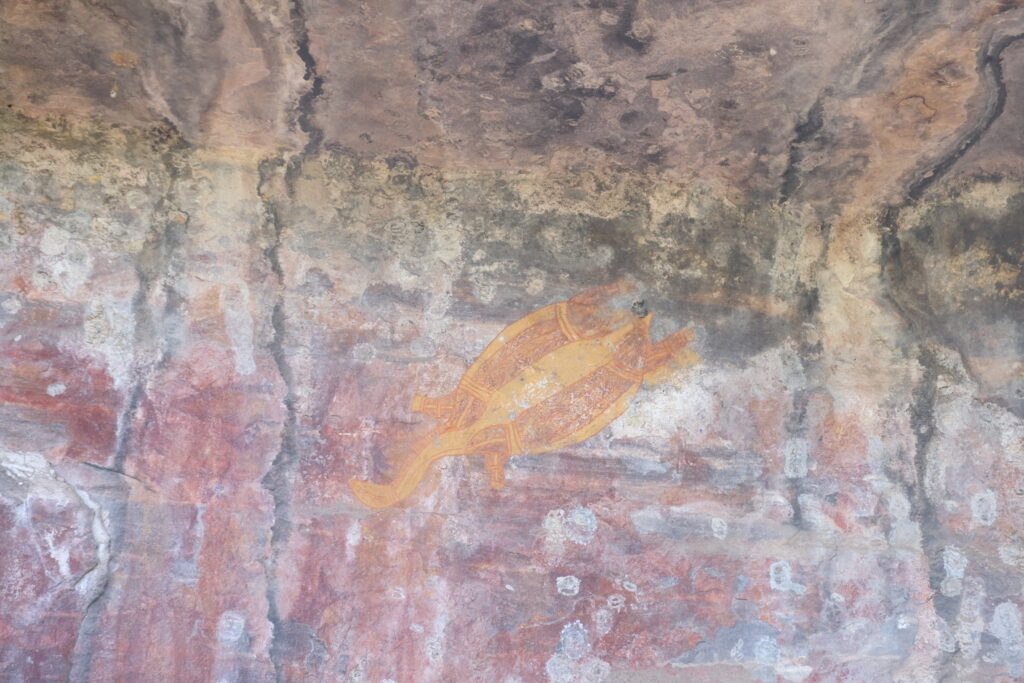
Another interesting thing I learned at Ubirr Rock is that some paintings are often painted over older art to illustrate modern events in the artists’ lives. The act of painting and storytelling was generally more important than the artworks themselves. So, although some of the art depicted events or animals that have been extinct for millennia, like the long-necked turtle and some fish, other paintings tell more modern stories. These include figures in contemporary dress (presumably European), with hats, shoes and hands in their pockets, often barking orders – yikes! And it looks like the aboriginal people didn’t think much of them because in a particular painting we saw, the modern clothed guy was painted as smaller than a fish – double yikes!
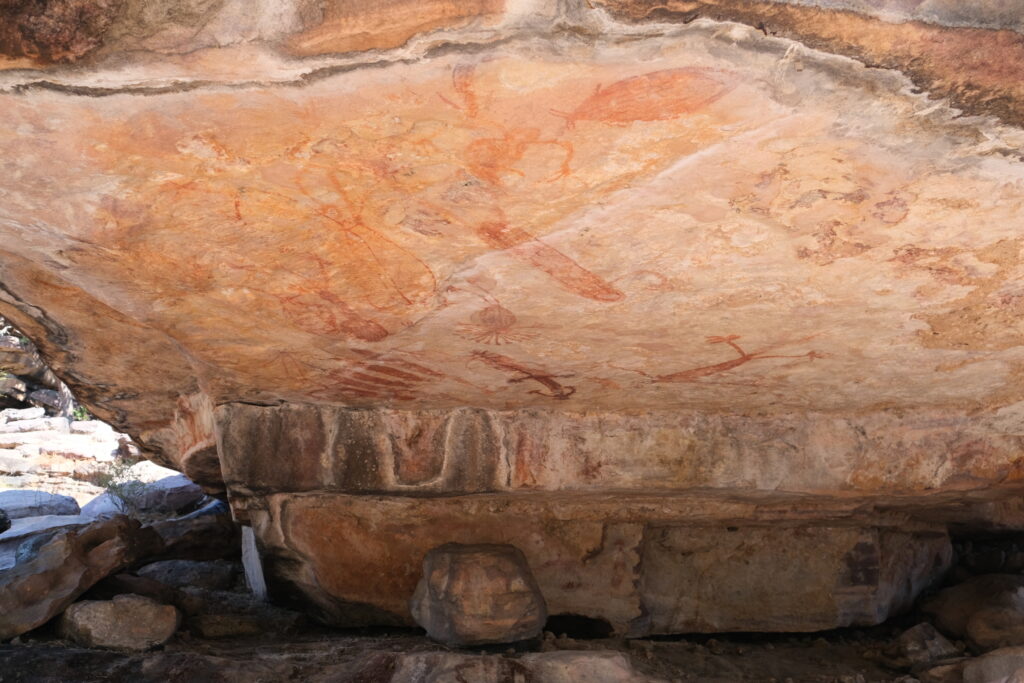
The Story of Namarrkkanj Sisters
The Namarrkkanj sisters used to play games near the mouth of the East Alligator River, where they would hide from each other by changing into crocodiles. They travelled to a freshwater spring near Point Farewell called Gungarnderdi, where they changed their bodies into saltwater crocodiles. The palms around the spring grew from the teeth the sisters pulled from their mouths and planted in the earth.
As crocodiles, the Namarrkkanj sisters always know where their victims are because the large scales on their necks have extra-sensory powers above or underwater. Strings like the one the sisters hold are commonly carried by older women, who manipulate them with their fingers to form complicated designs such as wildlife and lightning.
Rainbow Serpent
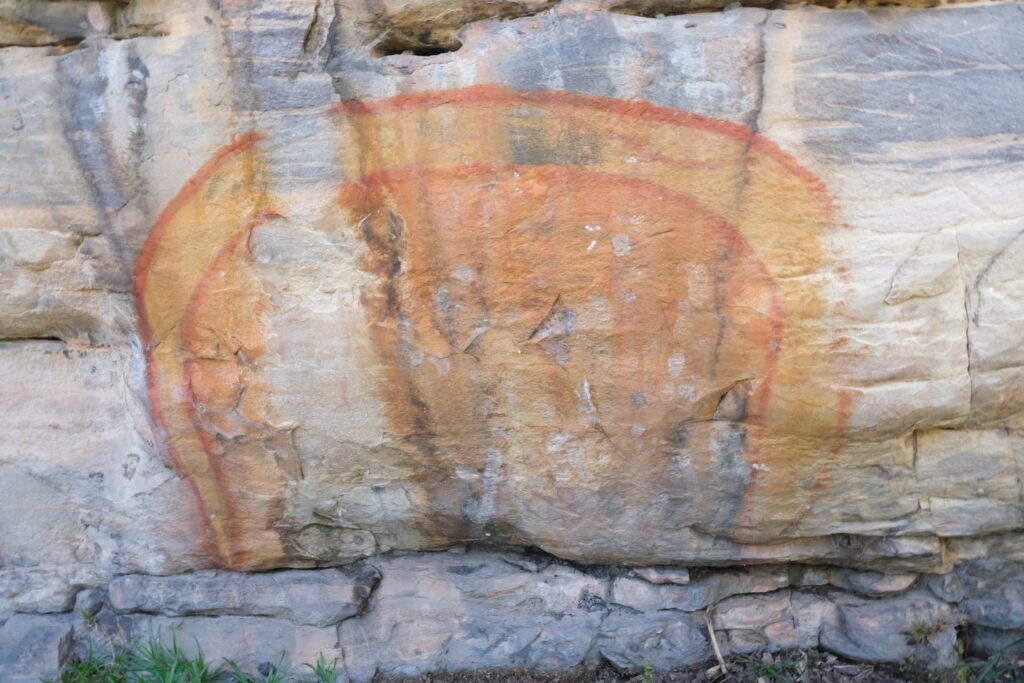
The rock art above is a painting of the most prominent Rainbow Serpent I saw at Ubirr Rock. The Rainbow Serpent, one of the most powerful ancestors of the creation time, is well known throughout Northern Australia.
It’s believed that during the creation time, when the first people created the landscape and all it contained, Garranga’rreli visited this place as the Rainbow Serpent. She painted her image on the rock to remind people of her visit. Her stop here is part of a longer creation path that links Ubirr Rock in Kakadu Park with Manngarre, the East Alligator Riven, and other places in Arnhem Land.
Aboriginal people are often reminded of the powers of the Rainbow Serpent during the wetter months when rainbows appear in the sky. The Rainbow Serpent usually lives peacefully in waterways but can be upset by certain noises, including crying children.
I told Norm, the guide, that this particular story reminds me of the story of Goni Botot, which my Amma used to scare me about when I was a kid. She threatened me that if I cried after dark or refused to go to bed, this Goni Botot person would take me away. In return, Norm told me about Babuyu, the Mimih spirit in Aboriginal culture that will catch kids at night.
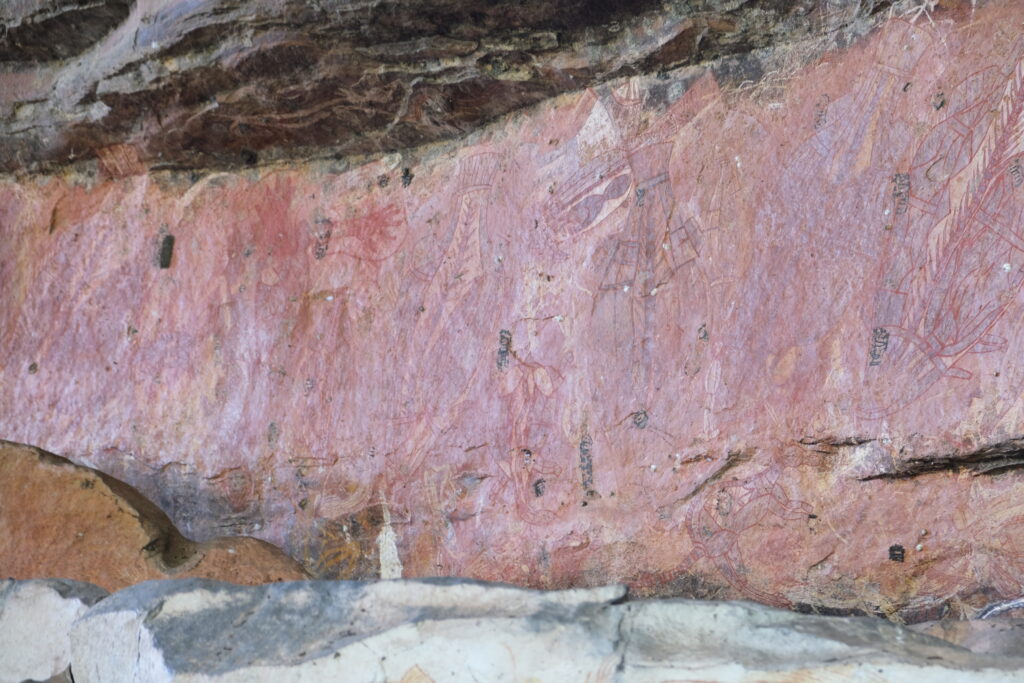
He also told us about another Mimih Spirit drawing in the Ubirr Rock site, but the aboriginal people didn’t want us to take his picture of it as it’s supposed to be a very mean spirit. Well, I am good with the rule.
Sacred Sites in Ubirr Rock
While walking around the Ubirr Rock site, Norm showed us a rock formation believed to be a burial site. But we Aboriginal people don’t allow it to be examined as they believe that some sites if disturbed, are considered to be extremely dangerous for everyone’s well-being.

The painting above tells the story of a person’s bones swollen by Miyamiya, a sickness you can contract if you disturb the stones of a sacred site downstream near the East Alligator River.
Red, Yellow and White
Most of the art rock are painted using clay – red and white, sometimes yellow (but it doesn’t last as long), but never black.
Old-timey Insta Snap
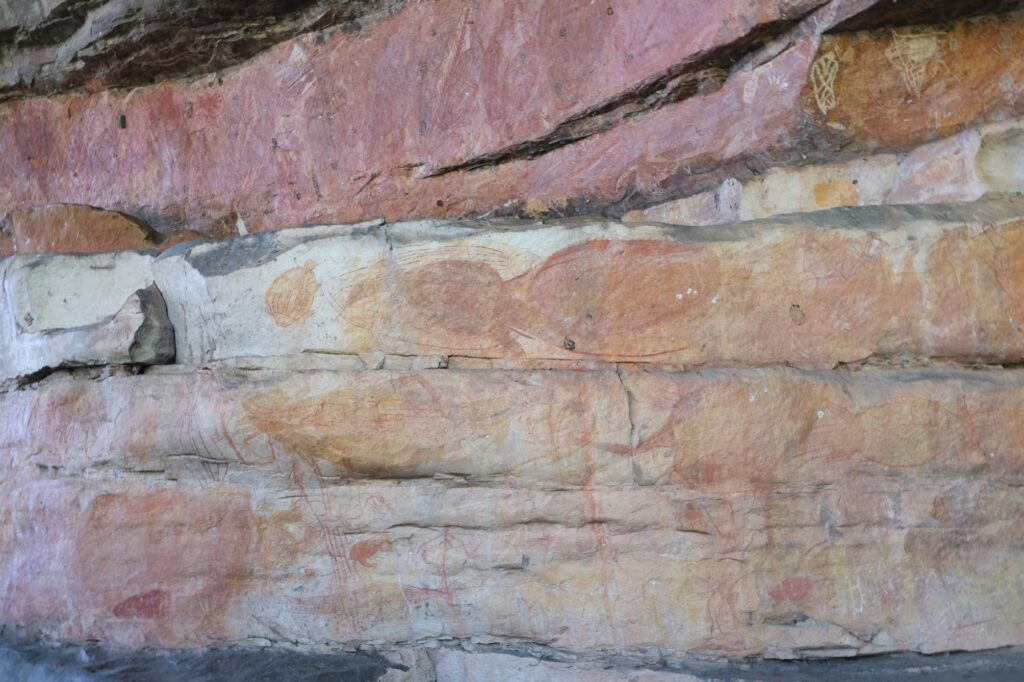
While some of the rock art here tells generational stories and traditional laws, some were simply put, menu—as in food menu. These are items the hunters’ favourite foods and proud catches that made it to the walls of the shelters. This part reminds me of snapping food pictures for Instagram; apparently, it’s an activity as old as time.
Awe, Why and Goodbye Ubirr Rock
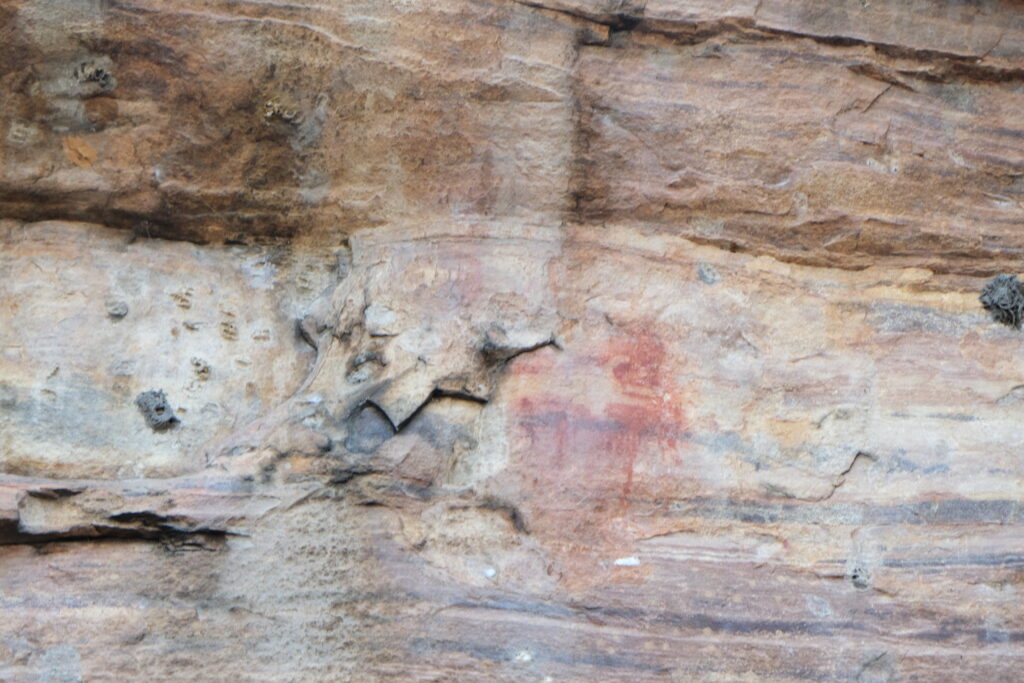
This rock art has been a natural classroom for centuries and generations for the Aboriginal people. And as an outsider, there are still undiscovered parts and unrevealed stories of the rock art in Ubirr Rock that left me with more questions than before I went there. Why is there a single drawing of a seahorse? Was it a drawing of horses or donkeys on another rock, and why? What do the hand marks on the rock mean? Why the Mullet fish head is always cut? But as it happens with all discoveries, we need more time and learning to understand them better. For now, I’m just glad for the privilege to see it in person.
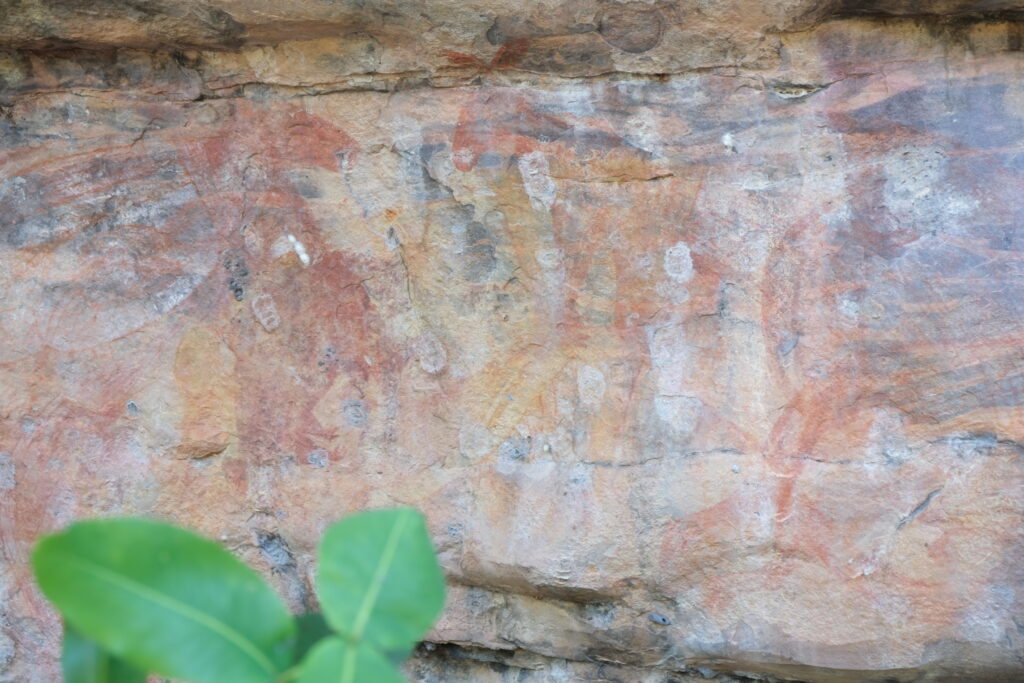
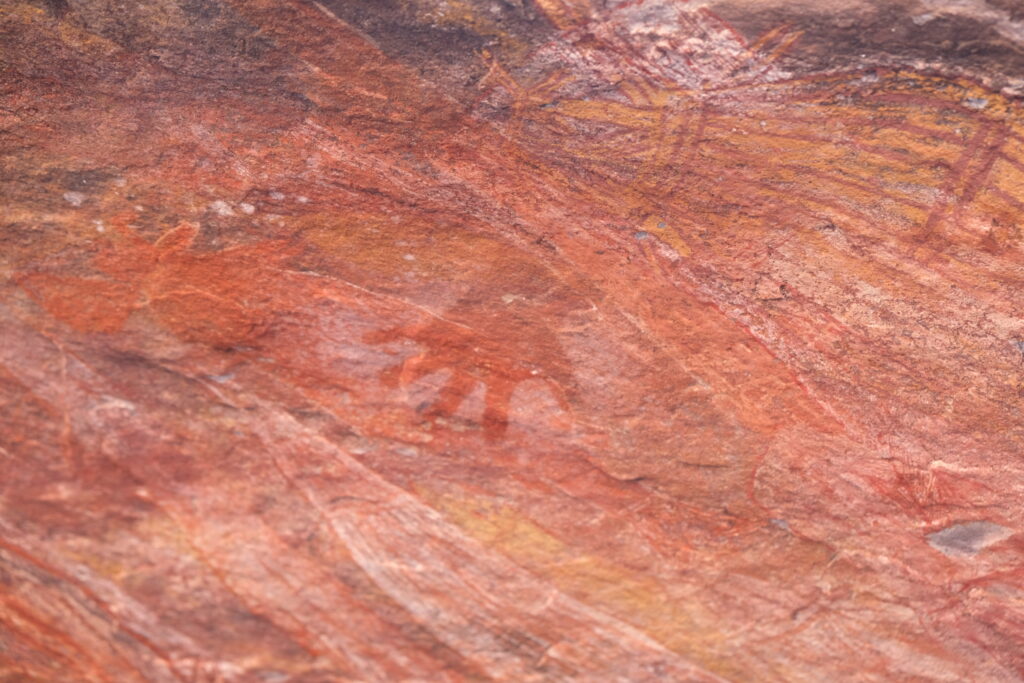
Disclaimer: I noted some information shared on that day for this blog post. If you know it needs to be corrected, please let me know, and I’ll do so respectfully. Thank you.
Bobo (goodbye)!
Follow me on Instagram @KultureKween for more recent updates.
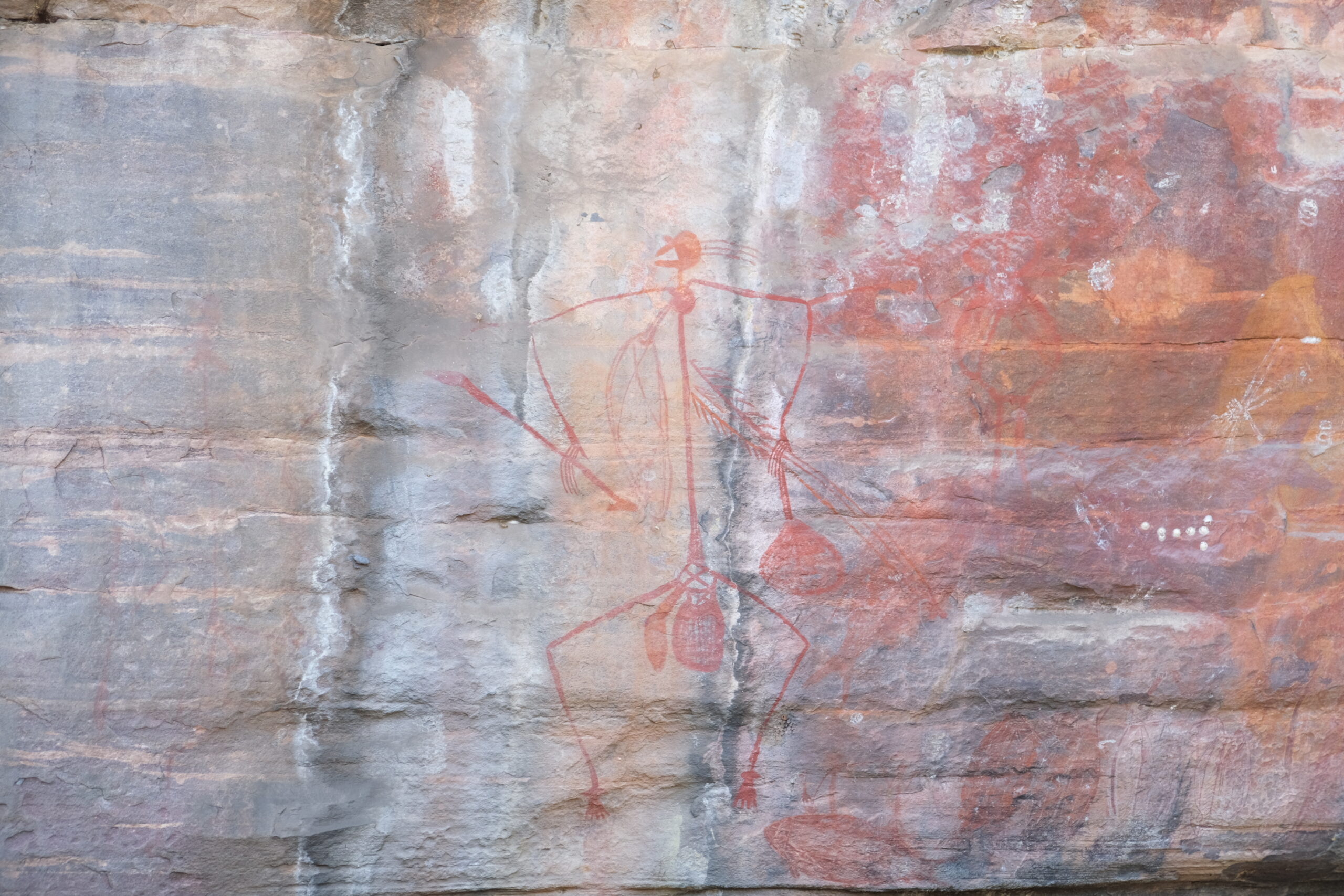
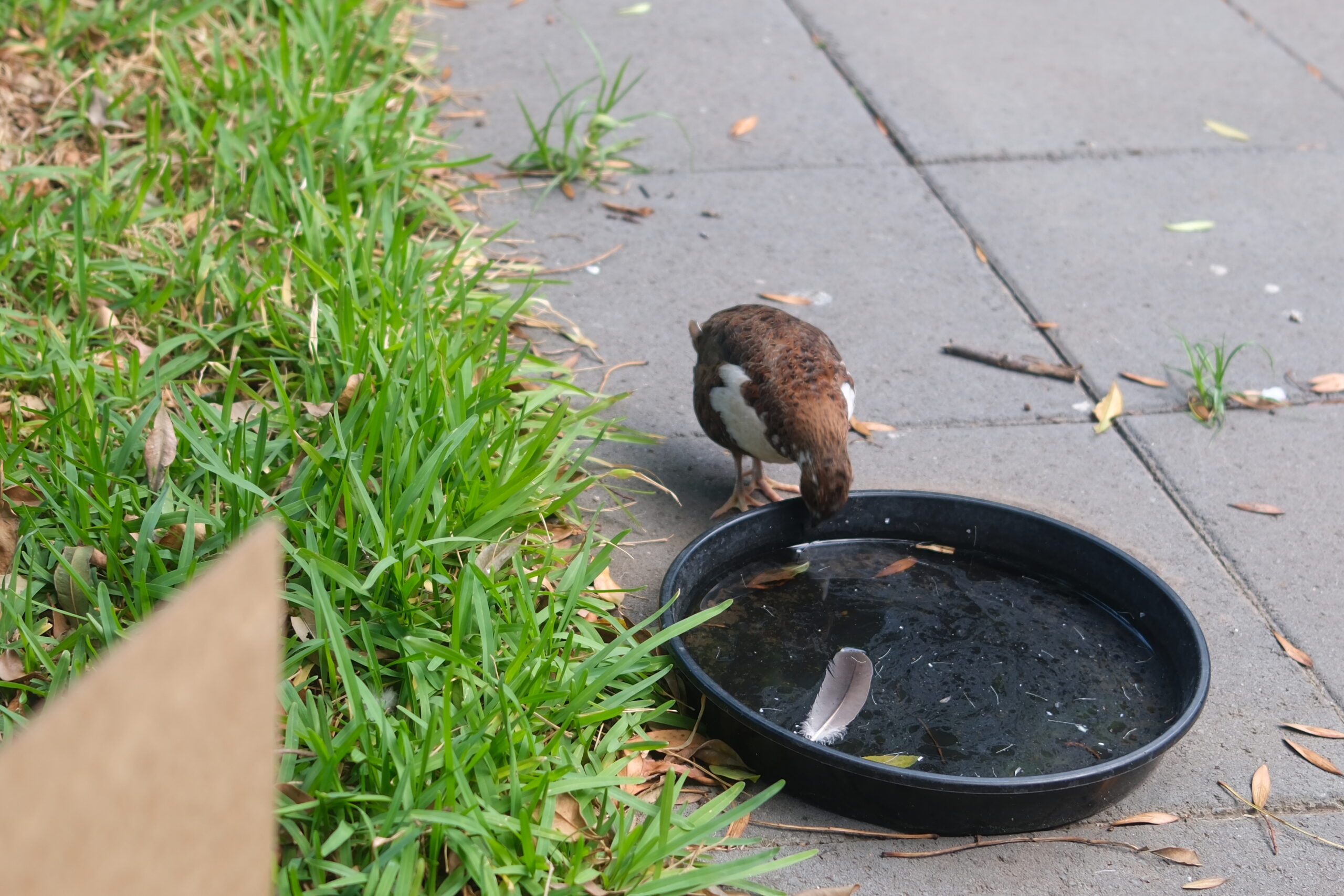
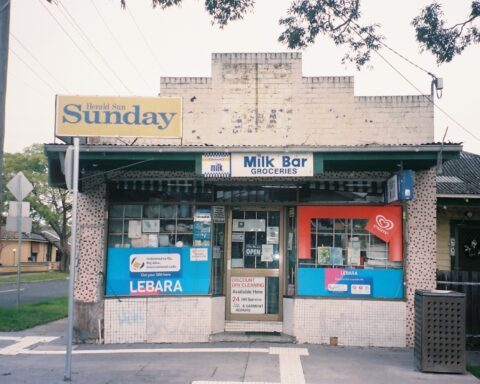
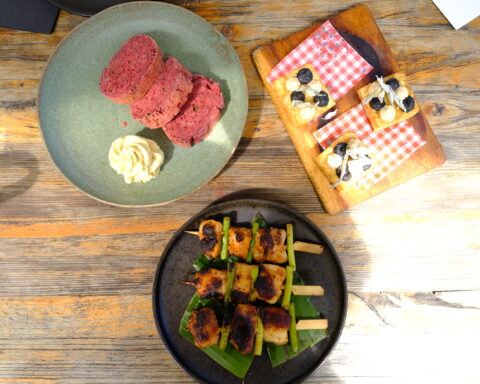

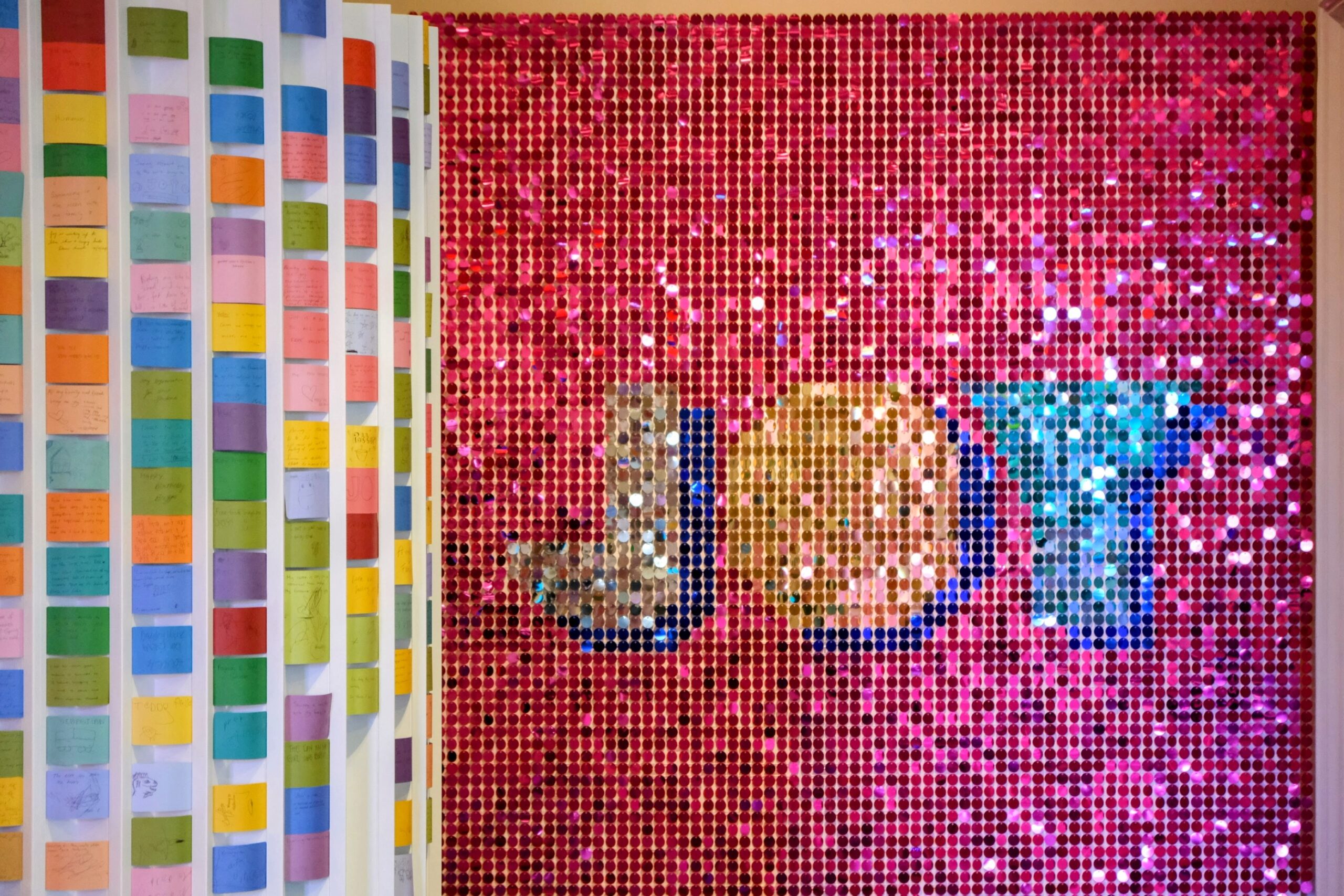
Love the part about the Mimih Spirit. I’m glad you got to see it all in person
Yeah it was pretty amazing Fa.
[…] in the ground to hold water and help mix the pigments, as in the picture above, which I took at the Ubirr Rock […]